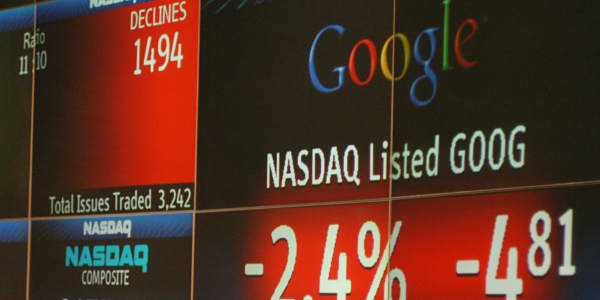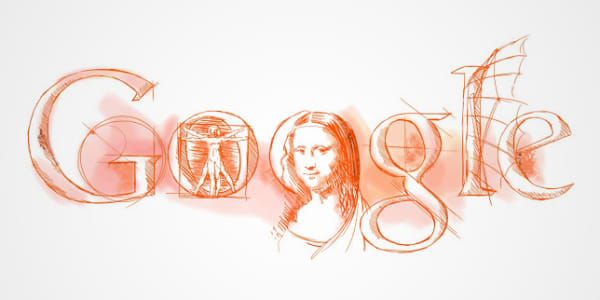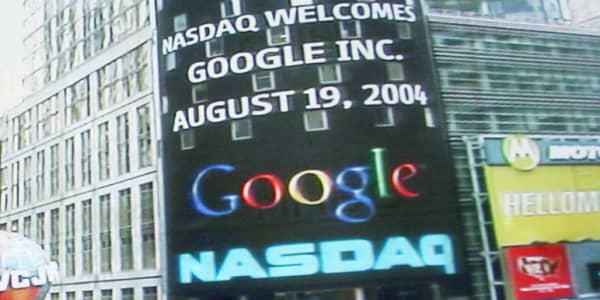Google's biggest product hits and misses
From a network of Internet-providing balloons to self-driving cars, Google's initiatives have garnered a reputation for huge scope and ambition. A company doesn't carve a spot among the world's most-ambitious businesses, however, without some failed ventures along the way.
"The way that Google approaches innovation necessitates failure," said Scott Strawn, analyst at IDC. "You're going to end up failing in some respects. But you have to do an effective job of managing that failure."
In the 10 years since its initial public offering, Google has rolled out a varied catalog of software and hardware. The company's initiatives have led to some of the most widely adopted and used technology on the planet.
"It's the ability to identify and expand products that are compelling to the mass market," said Frank Gillett, analyst at Forrester Research.
But the results have not always matched the company's grand ambition. Click through to check out some of Google's most—and least—successful products.
By Jacob Pramuk, special to CNBC.com
Posted 18 Aug. 2014
Hit: Search
All of Google's ventures stem from the enormous success of its search engine. After launching in 1997, it quickly dispatched competitors to become the most-used search engine around the world. It now logs more than 3 billion searches a day, the company told CNBC.
"It's their No. 1 foundational accomplishment. It's just ginormous," Gillett said.
He noted that search started Google's model of "offering so much to the consumer in return for letting them become a product they sell."
The search site quickly established a following with an algorithm that offered more relevant results than most of its competitors. The company's model of pinpointing advertising targets based on search results and user information, though controversial, formed the foundation of its ability to reel in more than $50 billion in total ad revenue for 2013.
"It's the core of the current business," Strawn said.
Miss: Google+
While Google Plus technically only trails Facebook in number of users on a social media site, assessing its success as a product is more complicated. Google Plus should be considered a miss because it never became a "Facebook killer" as it was often billed, some analysts said.
"I think it's fair to call it a huge failure," Strawn said.
Google Plus launched in 2011, and Google hoped the network would become more of an online persona, integrated into many aspects of Internet activity, than a social media site. Google Plus caught attention for some of its features, including Hangouts—video chats that allow up to 10 people to connect at a time—and Circles, which let users choose groups with which they share content.
But other features were stale, such as the "+1" button akin to Facebook's like button. Though many people are technically signed up, engagement statistics are difficult to gauge.
The company told CNBC that its most recent data estimate 540 million monthly active Google Plus users, including "socially enhanced" Google products. That includes software such as YouTube and Gmail where user activity can technically count toward Google Plus activity.
But dethroning Facebook may not have been the company's original goal, said Nate Elliott, analyst at Forrester Research. He would consider the network a success, especially in marketing, where many top brands have more followers on Google Plus than YouTube, Pinterest and Instagram combined.
Hit: Android
Google bought the developer in 2005 and the first smartphone with Android launched in 2008, well after products released by BlackBerry and Apple. It got a late start, but the Android operating system has since become the world's dominant phone software.
By the first quarter of this year, Android had established an 81.1 percent global market share, according to IDC. Its recent jump was drastic, as Android held 36.1 percent in 2011.
Google offers Android—already packed with popular features such as Gmail and Google Maps—to hardware developers free of charge, which has helped drive its wide adoption across the globe.
"It isn't as much about specific functionality," Strawn said. "It's about platforms that allow other developers to build on top of it."
Miss: Buzz
In one of its attempts to establish a viable social network, Google launched Buzz in 2010 as a Gmail feature. But the software couldn't establish solid footing.
"Buzz was a bust," Gillett said.
The network incorporated features similar to Facebook or Twitter, such as "likes" and microblogging capabilities. As with many other ventures, Google allowed Buzz users to streamline content from its other software. Similarities to competitors and privacy concerns, among other factors, contributed to the social network shutting down in 2011, say analysts.
Strawn wouldn't call Buzz a "huge failure," as he noted that the backlash from its quick end—both financial and public—was largely controlled.
Hit: Gmail
Google has dropped a number of pranks and special features on April Fools' Day throughout its history, including this year's challenge to catch Pokémon sprinkled throughout Google Maps. While it started on April Fools' Day in 2004, Gmail was a serious venture, and it would go on to become what Gillett called one of Google's "foundational accomplishments."
Users soon started choosing Gmail over other free email services, largely because of its speed and superior storage space. Gmail in 2012 surpassed Microsoft's Hotmail as the world's largest email provider. It currently has more than 425 million users, the company told CNBC.
Gillett noted that services such as the cloud-based Google Docs (and later Google Drive), which he lumps under the Gmail umbrella, have helped propel the product's success.
Miss: Wave
Similar to Drive's features for documents, Wave offered the ability to live edit streams of conversation, called "waves." When it launched in 2009, the software attempted to incorporate aspects of instant messaging, email, wikis and file sharing into one platform.
Google released the platform as an open source, hoping it would encourage other developers to expand on its offerings. Wave never received the interest Google expected, and the company nixed it as a stand-alone product in 2010.
Critics have said Google may have spread the platform too thin. It offered the capabilities of many existing technologies, but ultimately couldn't perform the tasks better than the originals.
Hit: YouTube
Though the video-sharing site hadn't yet developed an effective monetization model, Google bought it for $1.65 billion in 2006. YouTube has surged to become the third most visited site in the world, according to Google.
The site now runs an ad-based monetization model. Google doesn't release YouTube's financial performance, which leads to significant speculation about its viability. However, media reports hold that YouTube's revenue topped at least $3.5 billion last year and the site has turned profitable in recent years.
"It's hard to ignore YouTube," Gillett said.
Miss: Glass
Detractors have commonly expressed concern about privacy throughout Google's history. On the privacy front, Glass might become Google's most difficult product since search.
"The first iteration of Glass is a failure, in part because it's so controversial," Gillett said.
The wearable lens is designed to contain features such as apps and cameras, allowing users to receive notifications, read and snap pictures, among other functions, without changing their line of sight. After a period of invitation-only purchases, Google started selling Glass to the general public in May.
Fears have surfaced that Glass could lead to surreptitious recording, the use of facial recognition software or distracted driving.
"It does not seem to appeal to the mass market," Gillett said, but noted "it's not to say they won't eventually build something out of it."
Strawn hesitated to call Glass a failure, saying it had "enormous potential over time." Measures such as reducing the product's size to make it less "in your face" could make it more viable in the future, he said.
"This is years in advance of when it's ready for prime time," Strawn said.





